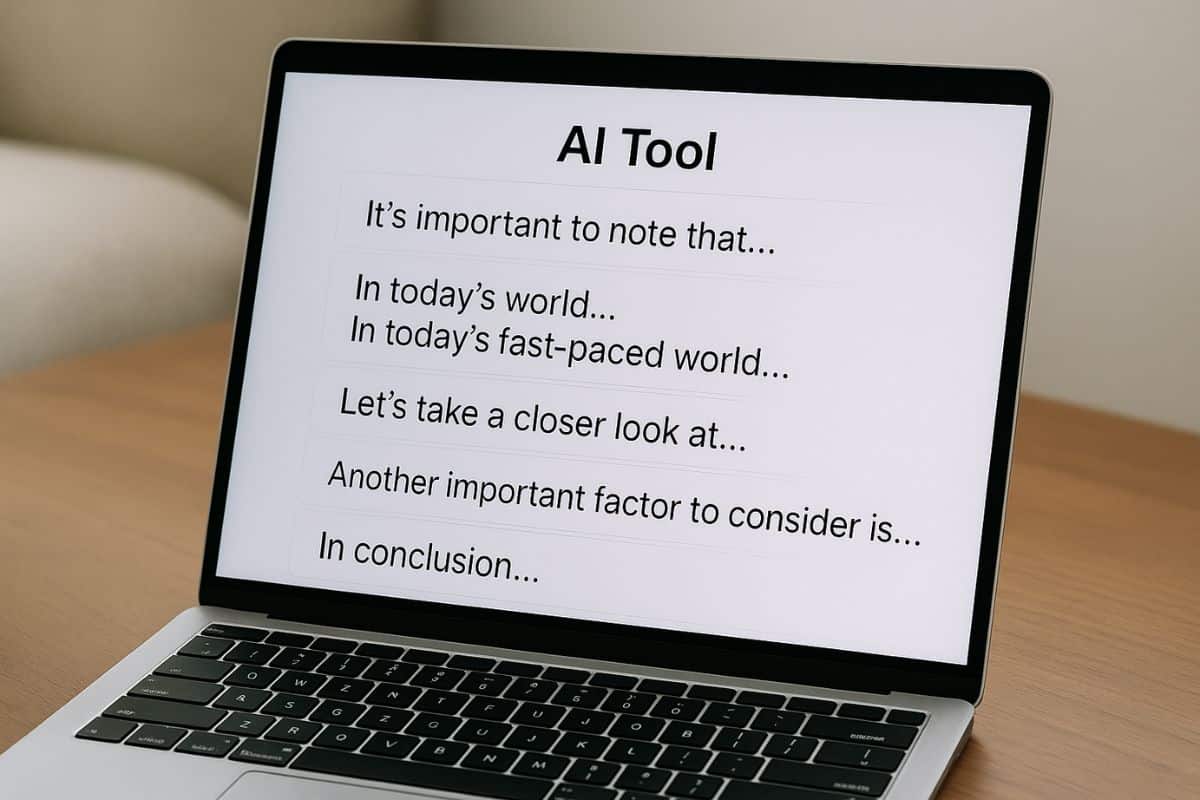There’s no denying that AI has come a long way in a short time.
Every ChatGPT update makes it sound more “human.” But if I’m being honest, in its default state, it’s still not fooling anyone.
Unless you spend a considerable amount of time prompting and editing the output aggressively, the average ChatGPT response carries the same handful of AI phrases that show up everywhere.
It’s not that those phrases are wrong.
They’re just used so often that no actual human would lean on them that much.
In this article, I’m going to dissect the most common AI phrases to avoid, explain why detectors pick up on them so easily, and show you how to avoid them so your work stays unmistakably yours.
Key Takeaways
- ChatGPT and similar models rely on stock phrases, uniform transitions, and formulaic structures because they’re trained to play it safe.
- Unlike AI, human writing naturally mixes sentence lengths, breaks grammar rules for effect, brings in oddly specific details, and is generally messy. The imperfection is what makes us human.
- AI detectors look for the predictability in AI-generated text using probability metrics like perplexity and burstiness.
What Are ChatGPT AI Sayings?
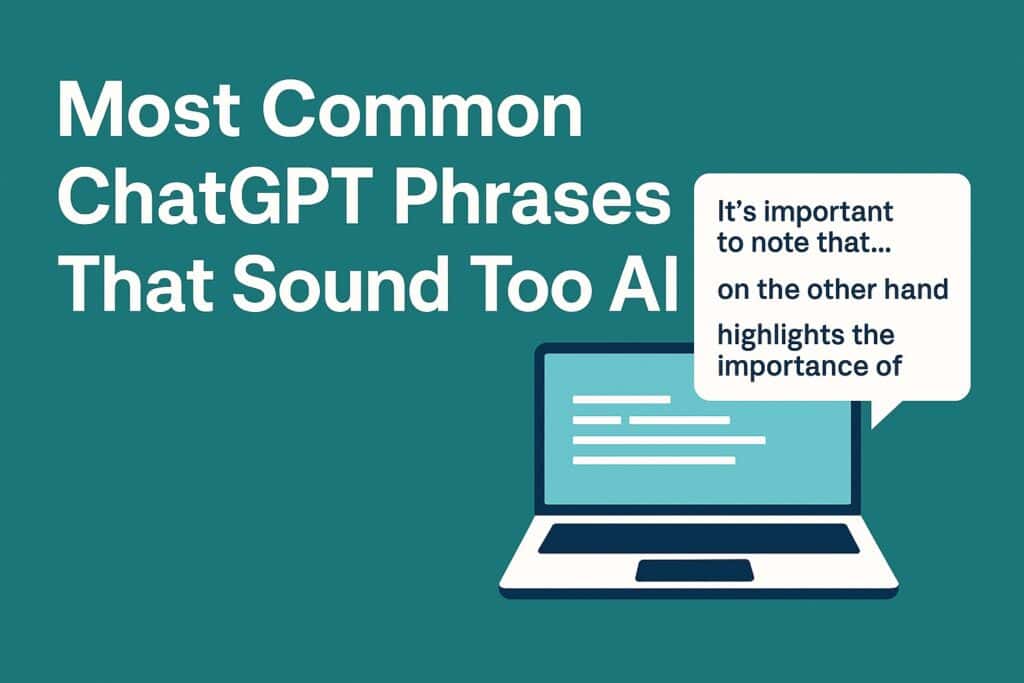
ChatGPT AI sayings are the particular phrases and sentence structures that ChatGPT, or all AI systems, rely on.
These linguistic expressions are a byproduct of how large language models are trained.
AI is trained on massive amounts of online text, and in doing so, it develops a tendency to favor some widely used words and phrases.
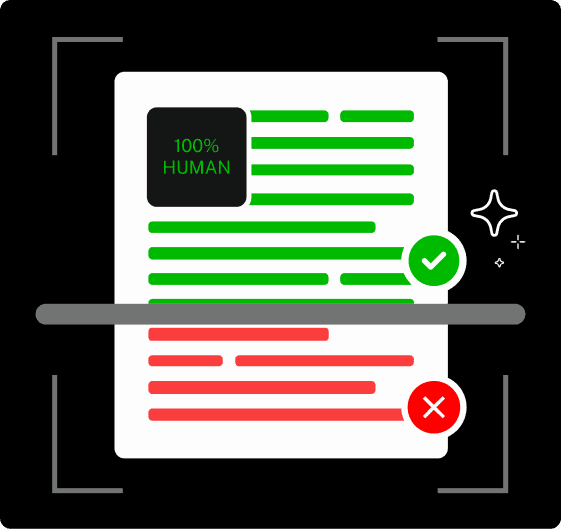
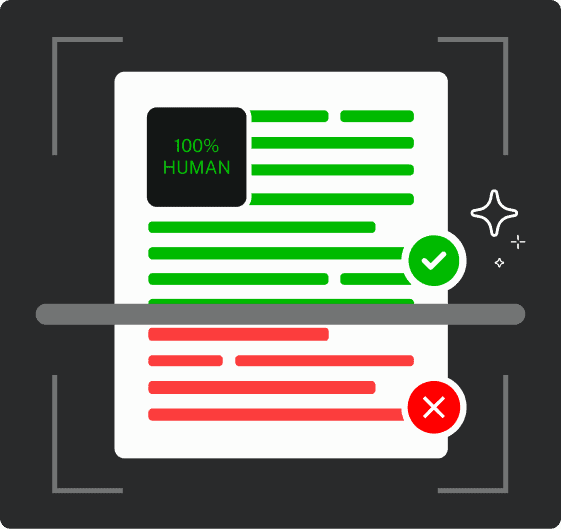
Never Worry About AI Detecting Your Texts Again. Undetectable AI Can Help You:
- Make your AI assisted writing appear human-like.
- Bypass all major AI detection tools with just one click.
- Use AI safely and confidently in school and work.
You’ll often see some particular repeated phrases in ChatGPT produced-text. This isn’t to say that these overused AI phrases are inherently bad.
They’re actually functional and meaningful. But their abundance is the telltale sign of AI authorship.
How They Differ From Natural Human Writing
Humans naturally write in their tone styles.
Every person has a different way to think, and naturally, uses different variations of sentences to convey the same thought.
Good human writing uses a mix of sentence lengths, it also breaks grammar rules when it serves the message.
You’ll find a great variety in the tone of human writing, sometimes with oddly-specific details.
But AI usually likes to play safe. It defaults to safe connector phrases that have been pulled from the data it was trained on to make sure what it produces is useful and neutral.
How Repetitive AI Sayings Trigger Detectors
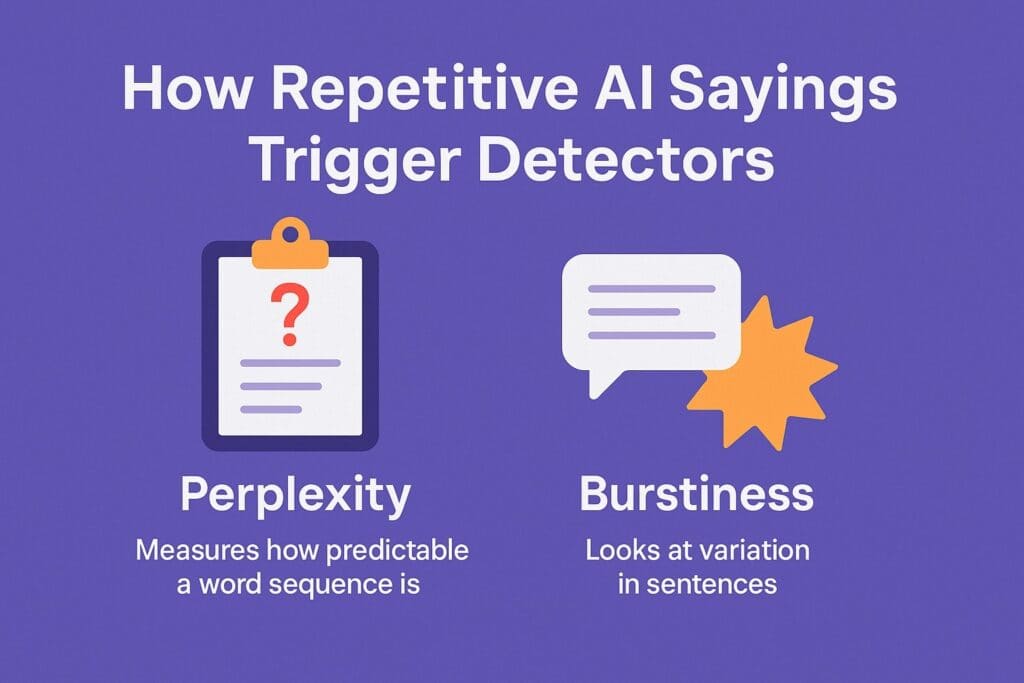
Now, of course, AI detectors are also machines. They can’t ‘understand’ writing the way humans do.
So, the way AI-generated writing is caught by detectors is through scanning for statistical patterns and predictability in text.
Many AI detectors use two parameters to determine if the text was generated by a human or a language model:
- Perplexity score, which measures how predictable a word sequence is. The lower the perplexity, the more likely it’s machine-generated.
- Burstiness looks at variation in sentences. Human writing is very varied. It may contain one long sentence followed by a short, punchy one, with variations in tone. AI, however, keeps sentence length and structure largely similar.
The Most Common ChatGPT Sayings
Below are the most common categories of sayings that make AI writing easy to identify.
Overused Sentence Starters
ChatGPT, like most language models, tends to begin paragraphs with phrases that are broadly applicable.
These appear again and again across very different topics because they’re “safe” statistical defaults.
You just can’t go wrong with them, regardless of the context in which they’re used.
Some of these include:
- “It’s important to note that…”
- “In today’s world…”/ “In today’s fast-paced world…”
- “Let’s take a closer look at…”
- “Another important factor to consider is…”
- “In conclusion…”
Humans rarely start multiple paragraphs with such rigid uniformity unless they’re trying too hard to sound formal.
A skilled writer will usually begin paragraphs with a sharp observation, some fact/statistic, a rhetorical question, or maybe a jarring statement that forces attention.
Formulaic Transitional Phrases
Another dead giveaway of AI writing is its dependence on predictable transitions.
ChatGPT loves to smooth out ideas with a set of repeated connectors like:
- “on the other hand”
- “furthermore”
- “with that being said”
- “as a result”
Read a few paragraphs of AI-generated text and you’ll notice these repeating connectors with almost perfect precision.
So, the text ends up being too clean.
Naturally, when we write things ourselves, we continue with whatever comes to our mind first, which is never consistent.
Stock Expressions Repeated Across Outputs
If there’s one thing that makes ChatGPT-generated text instantly recognizable, it’s the recycling of stock expressions.
They are full-on prefabricated lines used in every kind of output, regardless of topic.
You could ask it for a blog post on SEO, a social media post caption, a health explainer about skin treatments, or a student essay on the French Revolution, and odds are you’ll find the same language in all of them.
Funnily enough, the tone also stays eerily the same across different outputs.
A persuasive sales pitch and an academic-style essay have two very different audiences, but when ChatGPT produces both, you’ll still get the same neutral, almost too-professional tone in both.
Now, it makes sense because AI doesn’t create anything from lived experience.
It uses a series of the most statistically likely ways to continue sentences, which results in stoic expressions being repeated.
Some examples of these flat AI phrases to avoid are:
- “plays a crucial role”
- “highlights the importance of”
- “this underscores the need for”
- “presents the key challenge”
Real Examples of Obvious ChatGPT Sayings
Enough theoretical discussions. Now, let’s look at real, concrete examples of the exact AI phrases that give ChatGPT away.
The screenshot below shows a textbook example of AI’s favorite linguistic undertones we’ve been talking about so far.
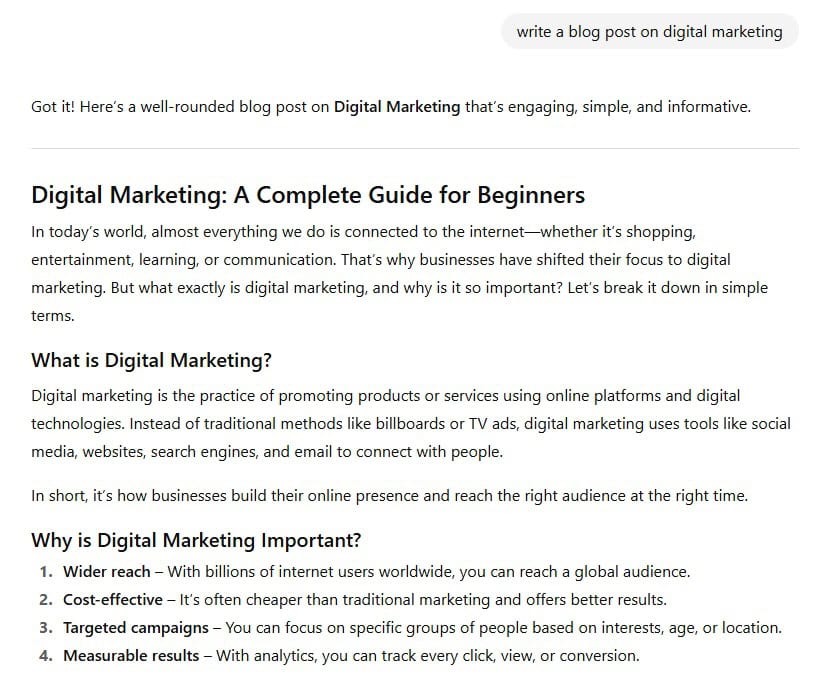
See how right from the opening line (“In today’s world”) you can hear the algorithm reaching for its most reliable stock phrase.
This opening line could lead into a thousand other topics, i.e., digital marketing, healthcare, remote work, cooking apps?
Also, notice the “That’s why businesses have shifted their focus to digital marketing” structure.
ChatGPT model loves the “That’s why X is so important” sentence format, because it neatly justifies the previous statement with zero effort.
If it were written by humans, you would’ve rather seen a concrete example here.
The final sentence beginning with “In short…” is another classic AI giveaway.
It reduces the text to a generic summary, with no edge, no specificity, no actual human insight.
Now, let me take the same output and run it through Undetectable AI’s AI Humanizer.
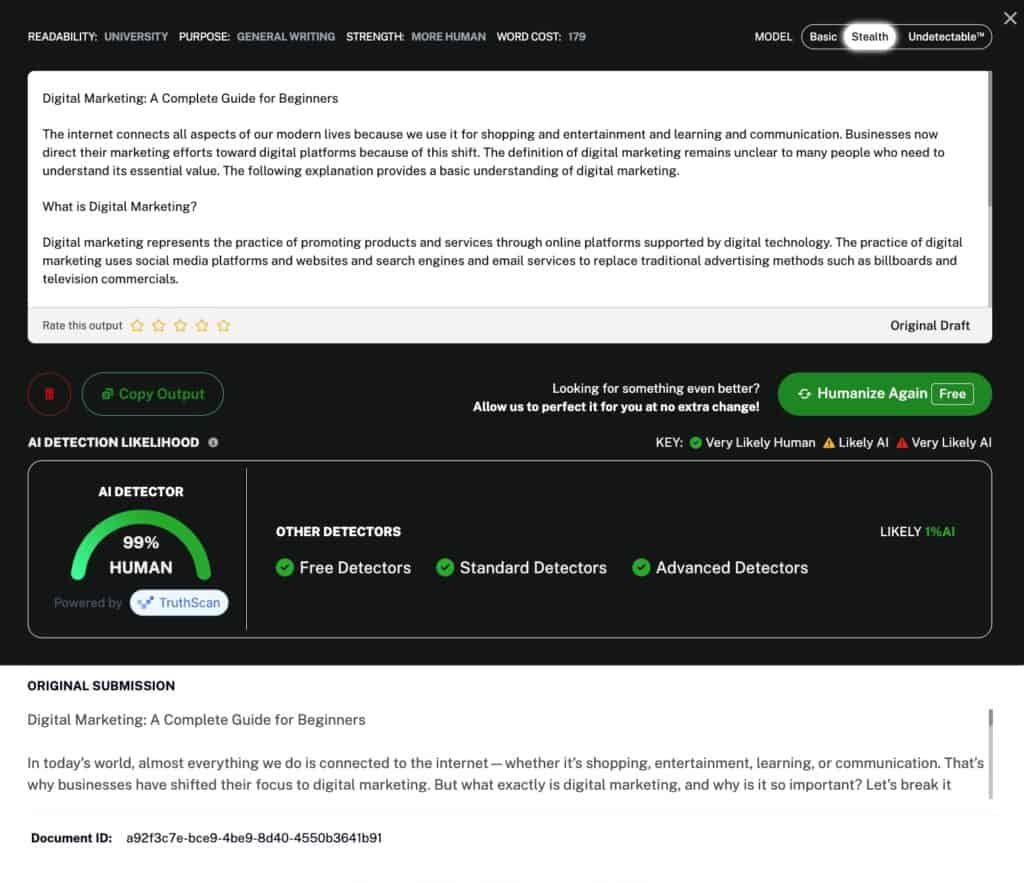
How AI Detectors Catch ChatGPT Sayings
AI detectors are built to identify the very linguistic fingerprints of ChatGPT-produced writing we have been discussing so far.
Although different detectors use different methods, the core principle remains to extract the predictability that human writing rarely sustains.
Undetectable AI’s detector, for example, is powered by TruthScan.
Now, TruthScan wasn’t originally made as an AI-text detector.
It started as a hackathon-built tool for identifying misinformation online and to verify the credibility of text using natural language processing.
When integrated in Undetectable AI Detector, it evaluates whether the flow, variation, and narrative texture of the sample writing resemble credible human writing.
Besides ChatGPT, it also recognizes outputs from GPT-3.5, GPT-4, GPT-5 (in future), Claude, Gemini, and paraphrased or “spun” content.
The same ChatGPT-generated essay on digital marketing is marked 88% AI-generated.
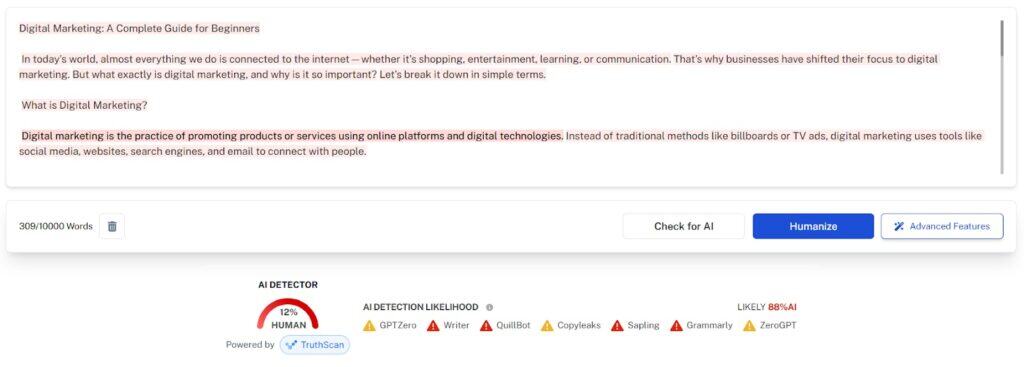
How to Avoid Overused AI Sayings
Before you try avoiding AI phrases, first train your eye to actually see them.
The more you start to recognize the patterns, they stop blending into the wallpaper.
Then you can do what human writers do instinctively, i.e., break a few language rules, switch your tone mid-thought, add in some lived examples, or toss in a turn of phrase that doesn’t feel like it was lifted from a style guide.
Variety in tone and structure is your best defense against sounding machine-made.
Also, interrogate your own sentences.
Would you actually say what you just wrote out loud in a conversation?
If not, try rephrasing it in a more natural way.
Always double-check your writing through a reliable grammar checker to catch grammar slips and weed out AI giveaway expressions before anyone else does.
Best Practices for Writers and Teams
Not everybody is affected by the generic nature of AI sayings.
But students, businesses, and those in SEO should particularly stay away from them.
How Students Can Avoid AI Detection in Essays
If you’re a student leaning on AI to help draft essays, fearing paranoia, what if my professor runs this through a detector and I’m toast?
I’ve got you!
AI detectors are not magical lie detectors.
As we saw earlier, they only spot writing that looks a little too generic and suspiciously free of the quirks real humans introduce.
To make sure your essays don’t get labelled as AI-written, always add some specificity in there.
Try to cite that one journal article your professor assigned or reference a point made in last week’s lecture.
Detectors can’t catch you when your text is full of context that only a human in your classroom would know.
Also, edit your sentences for some variability.
Write a long, meandering sentence when chasing a thought, then suddenly drop a short one for impact.
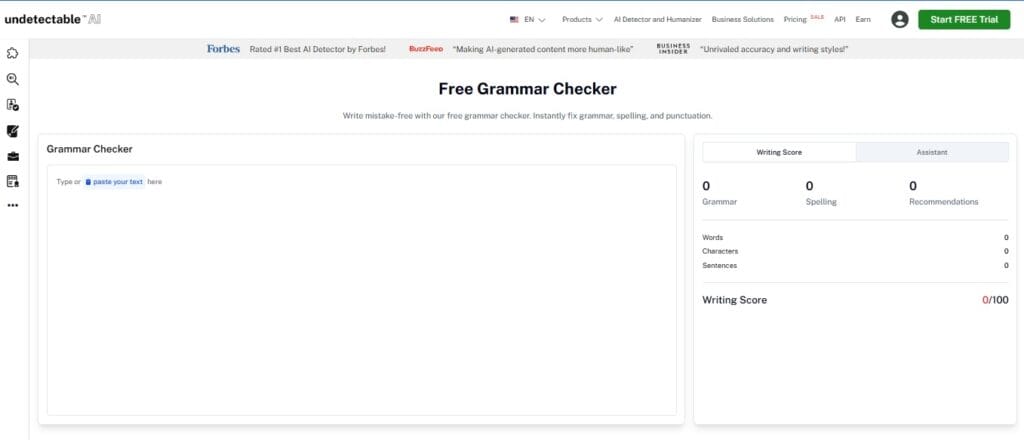
And finally, never skip running your submissions through Undetectable AI’s Grammar Checker to remove any grammatical inconsistencies.
How Businesses Can Protect Brand Voice
AI defaults to the same “safe corporate” voice that every other company is using.
If you don’t intervene, your brand voice ends up sounding exactly like your competitor’s.
And if there’s one thing worse than having no brand voice at all, it’s having a voice that blends into the noise.
Always ruthlessly edit AI generated phrases and swap stoic expressions out for language that only your brand would use.
AI will probably churn out content with predictable pacing, starting with an intro, then a transition, three neat points, and ending with a conclusion.
Shake this structure up. Use punchy openers or surprising turns to engage your customers.
A brand voice should have edges, quirks, humor, urgency, or personality traits that make it unmistakable. Undetectable AI’s Humanizer will help you convert classic AI phrases into organic writing.
SEO Teams and the Importance of Humanization
SEO teams know the game better than anyone. Google has made it painfully clear that robotic, keyword-stuffed prose can tank your rankings.
The algorithm is trained to favor originality and genuine user value.
The trap most SEO teams fall into is over-optimizing, which AI is brilliant at. It will obediently sprinkle keywords across every other sentence.
Sure, you’ll hit your keyword density targets, but you’ll also trigger every signal Google associates with inauthentic writing.
A product description should not just say “ergonomic chair” twelve times. It should tell me how my back won’t hate me after eight hours of Zoom calls.
To humanize ChatGPT-generated content effectively, blend in search terms into natural phrasing using synonyms and breaking the rhythm with unexpected sentence lengths.
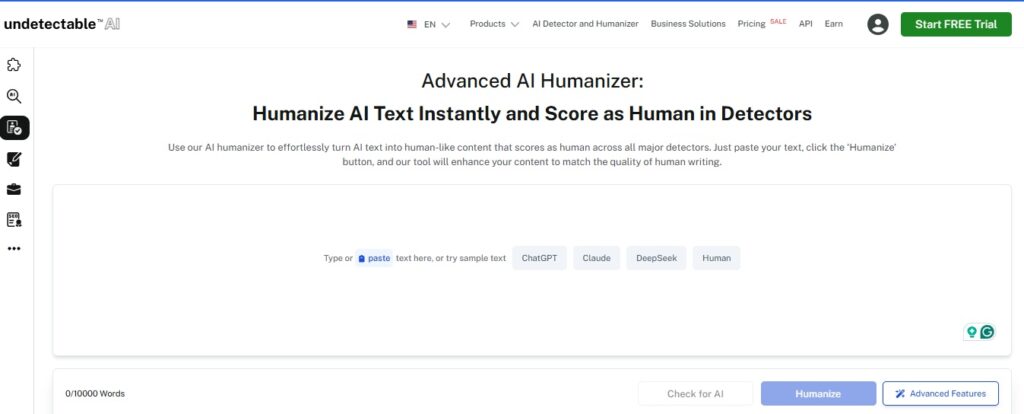
And again, Undetectable AI’s AI Humanizer will help you with that just fine.
Your go-to tools for polished, AI-proof writing—explore them in the widget below.
Conclusion
AI writing itself isn’t bad. It’s just everywhere, and that’s the problem.
No piece of content really stands out when everything sounds like it was pulled from the same polite-but-bland style guide.
We humans love originality. We remember the oddly specific examples, the jagged sentence that shouldn’t work but does, the detail that clearly came from a human brain.
And if you want your writing to live in memories, you’d need to push past the stock AI sayings.
Undetectable AI tools are really good at stripping out the robotic echoes in text, so you can put your own thoughts in there.
Check out Undetectable AI today!
